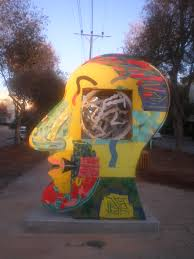
Writing Pitfall #7: Over Description
Writing Pitfall #7: Over Description
Reposted with permission from Write Divas
One of the many pitfalls of writing is over description. We’ve heard the writing advice “describe what your see” or “paint the scene with words.” But sometimes too much is just… too much. The one thing over description does really well is slow a story down.
But over description can do more than simply slow a story. Many times it can bring the forward momentum to a screeching halt, for example, take this over description of setting:
While the home was plain on the outside, it was quite beautiful and modern on the inside. There was a large kitchen to the right with stainless steel appliances and black granite countertops flecked with different colors. It had a center island big enough to accommodate a cook top and five barstools. The maple cabinets had a sleek, smooth surface. To the left was the dining area with a rectangular table large enough to seat at least eight but with only six chairs placed around it. The table’s rich dark patina made Greta wonder if it was an antique. The space opened up into a huge family room with vaulted ceilings and a large stone fireplace sandwiched between two floor-to-ceiling windows. The rest of the room was furnished with a leather couch, a coffee table, and two overstuffed chairs that faced a huge flat screen television mounted on the wall. Two winged-backed chairs faced the fireplace. There was a black baby grand piano situated next to the staircase that led to the second story.
While this paragraph is a full description of the home, most of these details do little to move the plot along. It’s like hitting a brick wall. Seriously, how many of you simply skimmed that paragraph? I know I did. Readers will see this and feel as if the author hit the pause button on the story so she could tell them something that had nothing to do with the plot.
Here are a few tools to incorporate description in your writing without resorting to the dreaded info dump.
Use the Senses
There are five of these beauties, so use them but don’t use them all in every scene or you’ll overwhelm your reader with too much of a good thing.
Dialogue & Character POV
What do your characters have to say about their surroundings without sounding forced? What does their dialogue show the reader? The narrative and thoughts of your point of view character can not only give much insight into the scene, but also give the reader a glimpse of what makes that character tick.
Make better word choices
- Use strong adjectives, but not too many. (See our writing exercise on this topic.)
- Avoid adverbs. Most of the time there is a better, stronger word choice that can replace an adverb.
- Ran quickly = dash
- Cry loudly = sob or wail
- Reddish-brown = maroon
Metaphors
These little gems can go a long way toward describing a scene or atmosphere, but most metaphors are clichéd, so it is best to use them sparingly. And avoid the mixed metaphor!
Be specific
Be clear about whatever it is you are writing about. Avoid telling, purple prose and vague descriptions. The more concise you are, the better your writing will be.
Avoid telling
How does one avoid telling when giving a description? Instead of telling the reader “Mark was short,” give the reader a visual with something like “Mark stood up straight and strained to see over the seat so he could watch the flight attendant’s safety demonstration.” This tells me Mark is short, is on an airplane, and does not have the aisle seat.
Over description is an issue writers have dealt with for a long time. It’s tricky to find the right balance that gives just enough to set the scene without overdoing. Remember to start out with the basics. If more is needed, add it in during the revision process.
I’ll leave you with the link to one of my favorite fiction writing contests, which is based on wordy opening lines. If you get a chance, check out The Bulwer-Lytton Fiction Contest—Where “WWW” means Wretched Writers Welcome. The purpose of this contest to write a wordy one sentence opener to a fictitious novel. The opening sentence of Paul Clifford by Edward George Bulwer-Lytton written in 1830 is the inspiration. How many of you recognize this opener?
“It was a dark and stormy night; the rain fell in torrents, except at occasional intervals, when it was checked by a violent gust of wind which swept up the streets (for it is in London that our scene lies), rattling along the house-tops, and fiercely agitating the scanty flame of the lamps that struggled against the darkness.”
What tools do you use to avoid over description?